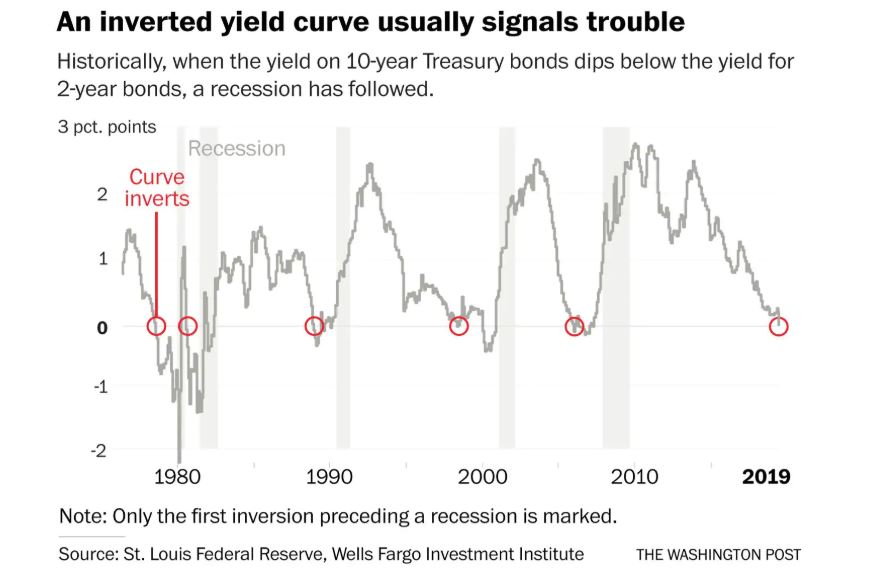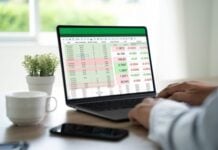A closely followed market indicator has flipped both in the US and Britain, a change usually taken as a signal that a recession is on its way.
Technically described as yield curve inversion, the indicator has preceded the past seven recessions in the US.
[adthrive-in-post-video-player video-id=”gc4m5trK” upload-date=”2019-08-15T08:23:36.000Z” name=”Fed Must Act on Inverted Yield Curve” description=”Fed Must Act on Inverted Yield Curve”]
Main yield curve of US government bonds inverts for first time since 2007 – and experts warn it may be a more ominous portent for the global economy as a whole.
A yield curve inversion means that the annual interest paid to holders of government bonds is higher for short-term bonds than for bonds maturing further away in the future.
That is unusual as investors generally want a larger return if they are going to lock their cash away for longer.
As The Telegraph explains:
On Wednesday, the main yield curve of US government bonds, or treasuries, inverted for the first time since 2007. The yield on two-year treasuries fell to 1.63 per cent, while on 10-year treasuries it dropped to 1.62 per cent.
The same “role reversal” occurred in UK gilts.
US markets suffered one of their worst days of the year, with the Dow Jones industrial average falling 3 per cent to 25,479. The S&P 500 lost 2.9 per cent, falling to 2,840, while the Nasdaq was down 3 per cent, at 7,773.
So is a recession in the US and Britain now inevitable? The short answer is: no. But there are still reasons to worry.
Gregory Daco, chief US economist at Oxford Economics, points out that there has been a gap of 10 months to three years between the indicator occurring and the previous recessions in the US.
But Marc Ostwald, chief economist at ADM Investor Services International, said this instance could be a more ominous portent for the global economy as a whole.
This yield curve inversion in the States really tells us more about the global economy than the US economy.

Data released earlier on Wednesday showed a contraction in German GDP and much weaker growth in China’s industrial production than forecast by economists.
The poor figures intensified fears for the global economy, already rattled by the US-China trade war. As a result, risky assets such as stocks have fallen out of favour and investors have been parking their money in safer government bonds, with treasuries traditionally seen as the safest.
As longer-dated treasuries normally provide better returns, they have been particularly popular. But demand has driven prices up and, as yields move in the opposite direction, they have dropped and the curve has inverted.
The same flip in the yield curve of UK government bonds reflects investors’ concerns about Brexit, according to Samuel Tombs, chief UK economist at Pantheon Macroeconomics.
“Brexit could be a very drawn-out, protracted drag on the economy in the worst-case scenario,” he said. Because of the risk of no-deal Brexit, investors think the Bank of England will keep interest rates low in the medium and long term to support the economy, and these expectations are pulling down yields on longer-dated gilts, Mr Tombs added.
He also noted that the yield curve has not always been a reliable harbinger of UK recessions.
“There were a few times in the mid-2000s when the curve inverted or nearly inverted and yet the economy was still doing OK.”
Read more:











